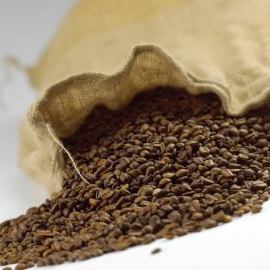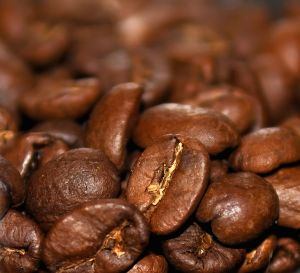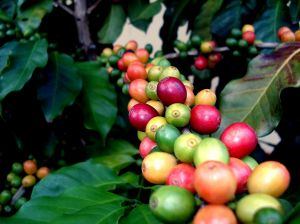Travel Tips
Coffee Culinary Travels: 5 Tasteful Journeys for Java Junkies
 The first time I entered the doors of Starbucks (age 11), it became a magical place: the smell of the small beans being ground, the sound of the espresso pouring into white cups, and the soft touch of the fresh baked goods.
The first time I entered the doors of Starbucks (age 11), it became a magical place: the smell of the small beans being ground, the sound of the espresso pouring into white cups, and the soft touch of the fresh baked goods.
It was beginning of my quite extreme caffeine habit.
But every drop of that beautiful brown liquid doesn’t just appear magically.

The earthy flavors, robustness and richness of coffee depend on how it is roasted and processed—but also on its origins.
Did you know that Hawaii is the only U.S. state that grows coffee, due to its combination of sunshine, volcanic soil and moderate altitude? Or that the mineral-rich soil from the Blue Mountains of Jamaica contributes to the mild flavor that makes it among the most coveted coffee in the world?
So check out this sampling of java junkie journeys to learn about coffee as it travels from coffee seed to your morning mug.
1. COSTA RICA
 Start off in Costa Rica, where the economy relies greatly on the coffee trade (not to mention tourism). Costa Rican coffee is known to have a medium body in both taste and acidity. This type of coffee often tastes best with fruity flavors like strawberry, pineapple or peach. The lighter Costa Rican coffees are best in the mornings with breakfast pastries, especially breads or muffins.
Start off in Costa Rica, where the economy relies greatly on the coffee trade (not to mention tourism). Costa Rican coffee is known to have a medium body in both taste and acidity. This type of coffee often tastes best with fruity flavors like strawberry, pineapple or peach. The lighter Costa Rican coffees are best in the mornings with breakfast pastries, especially breads or muffins.
In the village of Heredia, the Mercedes Norte neighborhood is home to the Britt Coffee Plantation. Café Britt prides itself on immersing visitors through a multimedia journey of their working farm and roastery.
Café Britt offers two different types of guided tours for java junkies: the “classic” for $40 and the “coffee lovers” for $94. Real fans should opt for the pricier four-hour tour, which not only takes you through the roastery and plantation, but also explores a turn-of-the-century mill to observe every step in the milling process, from receiving to sun drying. You also get to participate in professional coffee tasting. www.cafebritt.com/coffeetour
The Cooperative of Santa Elena is among the first fair-trade coffee farms in Costa Rica and is located in the famous Monteverde cloud forest. The fair-trade label ensures that the coffee is sold for a guaranteed “fair price” for the coffee, enabling members of the 500-person cooperative to sustain their farms and families. For $30, the four-hour tour begins with an introduction of the coffee producing history of the unique and rugged region. You will then visit a working farm and learn the coffee growing process directly from the stories of a cooperative family. www.monteverdeinfo.com
2. ETHIOPIA
 The brew of Ethiopia is known to be very bold and to have tangy or lemony aftertastes. This blend often goes well with milk chocolate or white chocolate, so serve it up with a lighter dessert.
The brew of Ethiopia is known to be very bold and to have tangy or lemony aftertastes. This blend often goes well with milk chocolate or white chocolate, so serve it up with a lighter dessert.
You’ll want to head to the Omo River region, which is believed to be the birthplace of coffee back in the 5th century. Today, Arabica brew is the lifeblood of this region, and is Ethiopia’s largest export. Check out Oromia Coffee Farmers Cooperative Union, a small group of coffee growers who operate together and under the principles of the International Cooperative Alliance. The OCFCU also strives to help better the social and economic situation of its member growers. More than 70 percent of the Union’s profits are distributed back to the farmers and the rest of the profits are used to aid social services in the grower’s immediate area, such as building community centers or schools. To arrange a tour, contact the coop’s general manager and coffee guru, Tadesse Meskela. www.oromiacoffeeunion.org
3. AUSTRALIA
 The flavor of Pacific coffee family is extra bold. The aftertaste is extremely earthy. This is a coffee that you slurp instead of sip and savor; the flavor comes from the coating that the coffee leaves on your tongue. It goes best with dark chocolate or richer, purer caramel desserts.
The flavor of Pacific coffee family is extra bold. The aftertaste is extremely earthy. This is a coffee that you slurp instead of sip and savor; the flavor comes from the coating that the coffee leaves on your tongue. It goes best with dark chocolate or richer, purer caramel desserts.
Head straight to the Cairns Highlands in North Queensland, the heart of the Aussie coffee industry. Skybury Coffee Plantation Centre is Australia’s oldest coffee plantation. Owner Ian MacLaughlin has been in the coffee industry for more than 20 years and is truly an expert on the tiny bean. An hour-long tour is about $13, and explores the plantation grounds, the dry processing plant, and the coffee lab where guests can experience the art of grinding, roasting and tasting. Finish up with a full cup at the beautiful Australian Coffee Center, which sits on top of the Great Dividing Range e on the peak of the Eastern Highlands overlooking the plantation. www.skybury.com/au
4. INDONESIA
 You can’t experience Indonesian coffee without stopping on the tiny island of Java, the homeland to coffee’s best nickname. Early Dutch explorers brought Arabica trees to Java and the small economy soon became almost totally supported by the even smaller bean. The Losari Coffee Plantation Resort & Spa sits on 60 acres of vegetation in the highlands of Magelang and is surrounded by eight (inactive) volcanoes.
You can’t experience Indonesian coffee without stopping on the tiny island of Java, the homeland to coffee’s best nickname. Early Dutch explorers brought Arabica trees to Java and the small economy soon became almost totally supported by the even smaller bean. The Losari Coffee Plantation Resort & Spa sits on 60 acres of vegetation in the highlands of Magelang and is surrounded by eight (inactive) volcanoes.
This is a working coffee plantation that is also a luxury resort with villa accommodations and a spa. The villas are built to resemble the original Javanese coffee plantation houses with intricate woodcarvings and verandas for enjoying all the nice weather. Tours of the coffee plantation are a must and afternoon tea is served daily in the main house. Of course, since you are on Java, you really should sip on coffee instead of tea, but don’t worry, you can still order the scones. www.losari.info
Meanwhile, the island of Sumatra is known for its varied roasts. Among the most popular is the darker Arabica variety grown in Northern Sumatra. However, don’t shy away from another renowned type of coffee, the kopi luwak, which is produced mostly in the center of the small island—it’s made with droppings collected after little raccoon-like creatures have munched on the coffee beans. The Taman Simalem Resort is located northwest of Lake Toba right in the middle of Sumatra’s coffee-growing regions and offers a luxury look at coffee. The beans are harvested right on the property and tours are easily arranged through the property’s concierge. www.tamansimalem.com
5. A QUICK STOP IN ITALY
Finally, end your trip by seeing caffeine in its fanciest form, the specialty espresso market of Italy. Top chefs from around the world serve Illy in their restaurants, and locals flock to cafes to fuel up on rich, steaming espresso.
Check out the Illy Caffe in Trieste, Italy where you can also tour the company’s factory. Illy even has a special coffee school called the Università del Caffè, teaching students how to brew, taste and appreciate espresso. If you don’t want to travel that far, a series of Università del Caffè courses are also available at the International Culinary Center in New York. www.illy.com
By Courtney Crowder for PeterGreenberg.com.
Get more information about great food experiences across the globe in our Culinary Travels section.
Related articles on PeterGreenberg.com:












